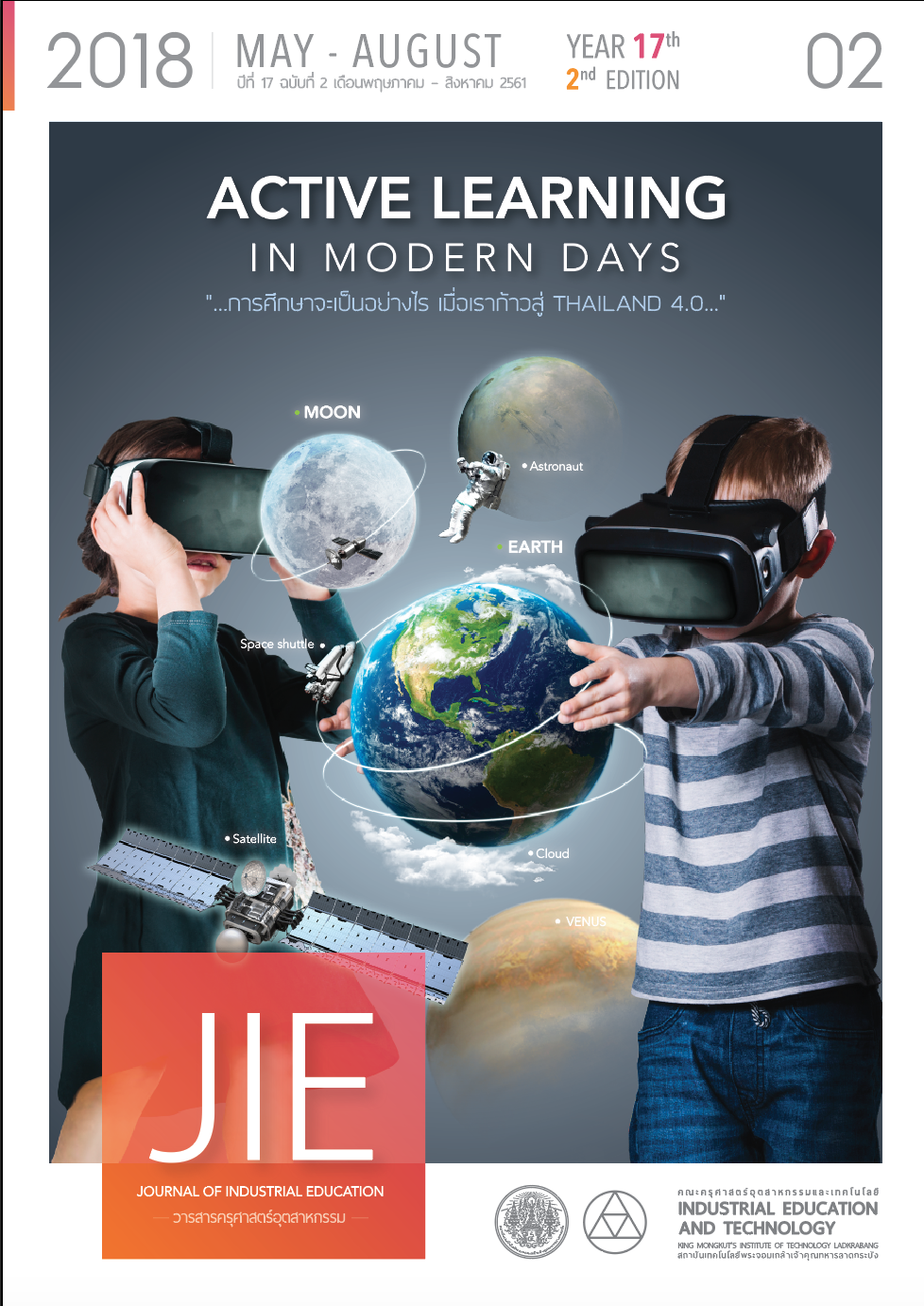AUGMENTED REALITY LEARNING MEDIA ON SOLAR ENERGY
Keywords:
Learning Media, Augmented Reality, Solar Energy, Learning Achievement, EfficiencyAbstract
The purpose of this research was to create learning media, evaluate its efficiency and compare the learning achievement on solar energy by an experimental group learning by using augmented reality media and a control group of students in a regular classroom. Random sampling was used to choose a sample of 40 bachelor’s degree students from 100 second academic year students in B.E. 2560 who were enrolled in sustainable energy course at Phetchaburi Rajabhat University. Both the experimental group and the control group were divided into two groups of 20 students. The tools for data collection were augmented reality learning media on solar energy, a qualitative evaluation on the content and multimedia production techniques, and a learning achievement test comprising 60 items with an index of congruence (IOC), level of difficulty, and level of discrimination between 0.67 to 1.00, 0.35 to 0.80, and 0.20 to 0.80, respectively. The reliability coefficient was 0.92. The statistics utilized for data analysis were mean (), standard deviation (S.D.), and t-test independent samples.
The results of the study were that the quality of the contents ( = 4.33, S.D. = 0.36) and multimedia production (
= 4.23, S.D. = 0.58) were at the good level. The efficiency of the learning media by augmented reality of solar energy or E1/E2 was 83.37/86.00 in accordance with the specified hypothesis 80/80. When the experimental group and control group were compared, it was found that there was a significant difference between the average mean scores of the control group and those of the experimental group at the 0.05 level. It means the augmented reality learning media on solar energy can be utilized for self-learning.
References
[2] Panida Tonsiri. 2010. Augmented Reality. Executive Journal, 30(2), p. 169-175.
[3] Nutthakon Songkram. 2011. Multimedia for learning design and development. 2ed. Bangkok : Chulalongkorn University.
[4] Raweewan Shinatrakul. 1995. Education Research. 2ed. Bangkok : Industrial Education, King Mongkut's Institute of Technology Ladkrabang.
[5] Chaiyong Brahmawong. 2013. Developmental Testing of Media and Instructional Package. Silpakorn Educational Research Journal, 5(1), p. 5-20.
[6] Anderson, L. and Krathwolh, D. A. 2001. Taxonomy for Learning, Teaching and Assessing : A Revision of Bloom’s Taxonomy of Education Objective. New York : Longman.
[7] Punnee Leekitchwatana. 2013. Research Methods in Education. 8th. Bangkok : Meem Service Supply.
[8] Nongkran Sisaart. 2013. A Creating of Learning Environment from Augmented Reality Technology Using Inquiry Process to Develop Science Process Skills on the Topic Solar System for Prathomsuksa 4 Students. Educational Communications and Technology, Industrial Education and Technology, King Mongkut's University of Technology Thonburi.
[9] Nuntawat Paha. 2017. Development of E-Learning Courseware on Internet Network on Development a Website of Graphic Information for Vocational Certificate Level 2. Journal of Industrial Education, 16(1), p. 34-41.
[10] Narongkorn Seejan. 2016. Tablet-Based Learning about Basic Semi-Conductor Devices. Journal of Industrial Education, 15(2), p. 138-144.
Downloads
Published
How to Cite
Issue
Section
License
"The opinions and contents including the words in papers are responsibility by the authors."
"ข้อคิดเห็น เนื้อหา รวมทั้งการใช้ภาษาในบทความถือเป็นความรับผิดชอบของผู้เขียน"



